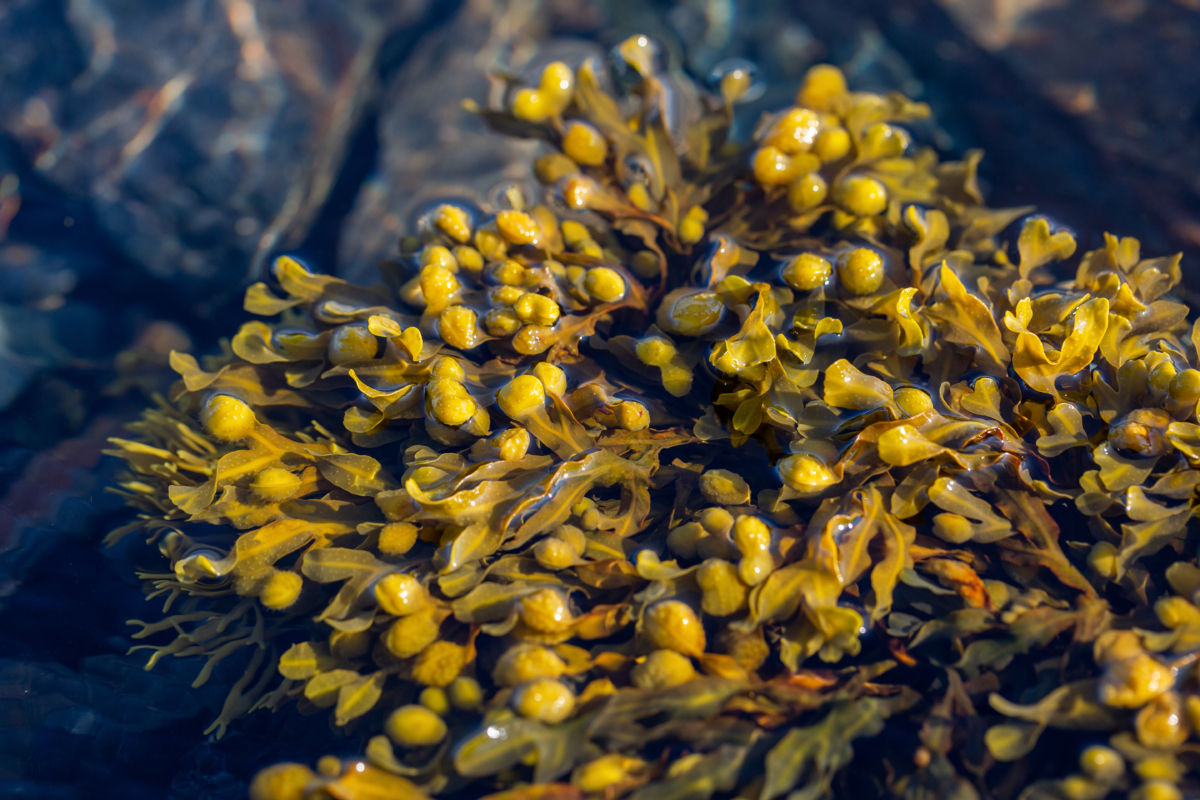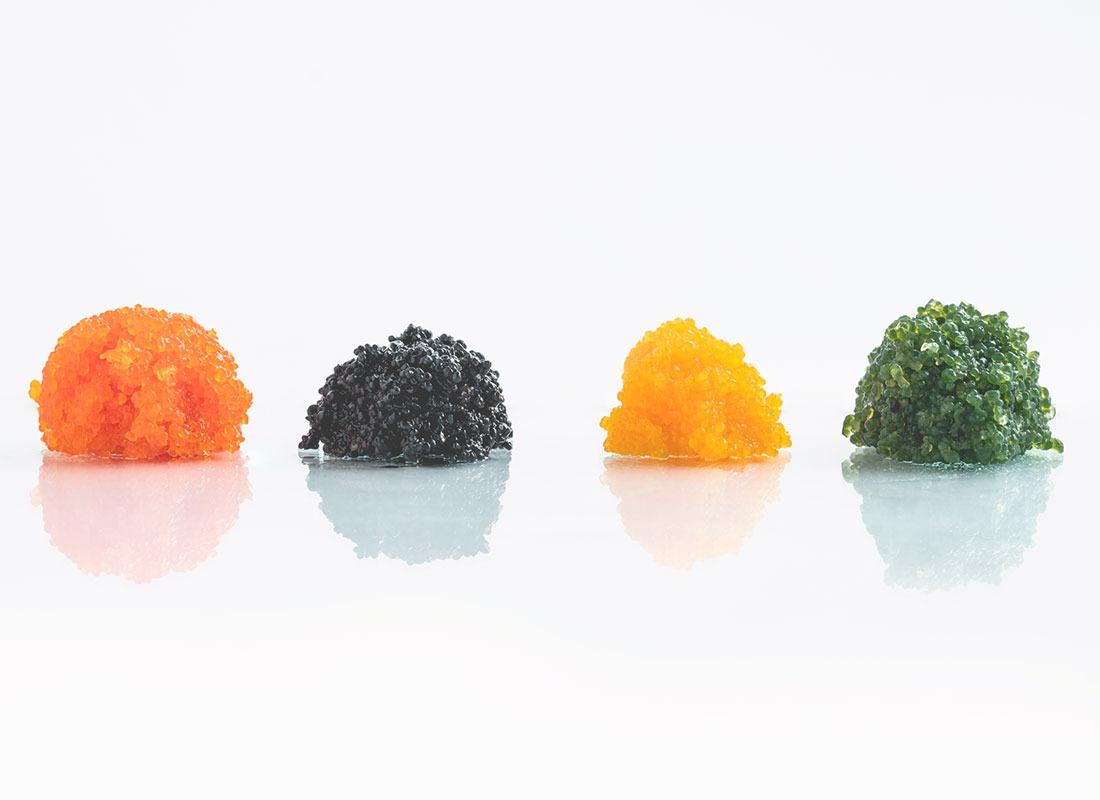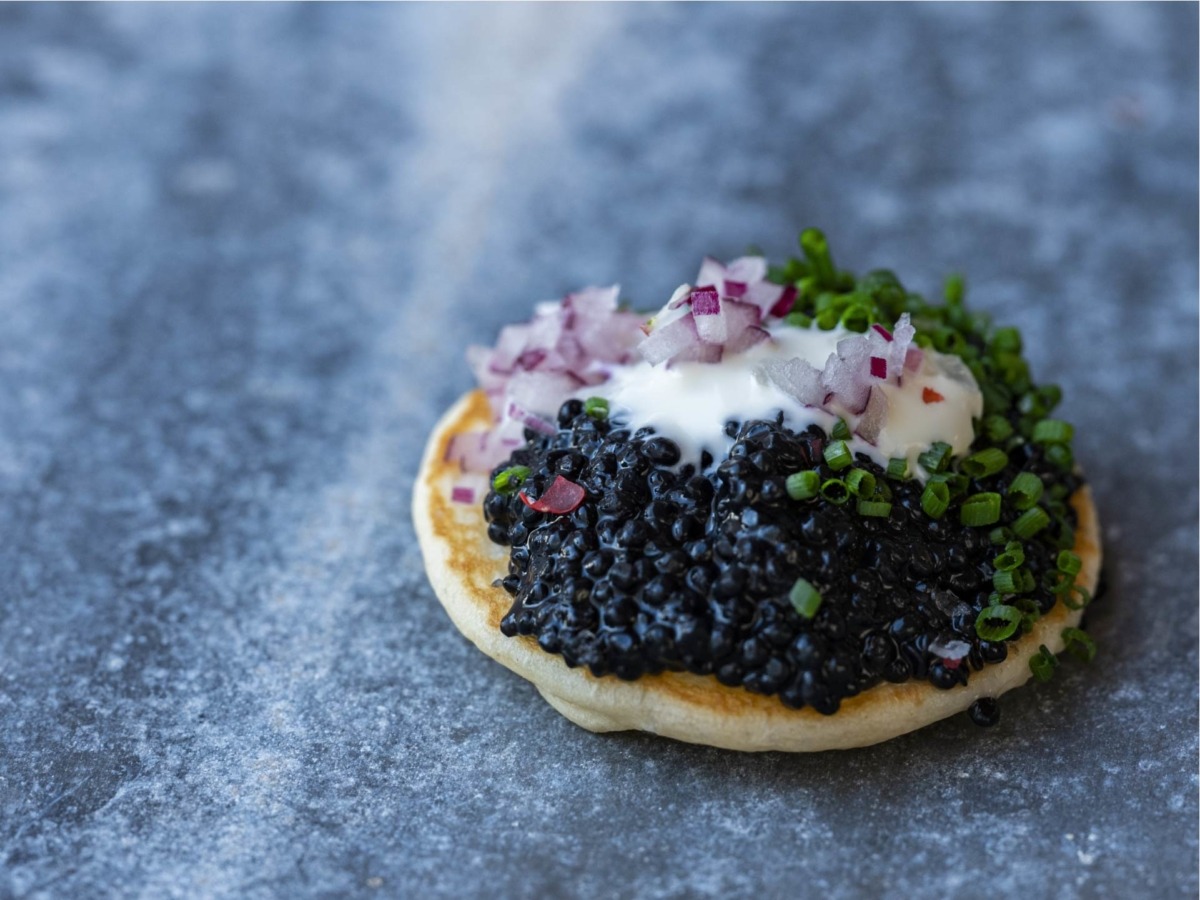Kelp caviar is a beautiful and delicious food high in vitamins and minerals. A plant-based sustainable food you can consume with a good conscience.
Kelp caviar is a plant-based food that is 100% natural and 100% vegetarian. It’s a beautiful and luxurious food made from a sustainable source. Kelp caviar is not only meant for vegetarians and vegans as kelp contains numerous benefits. Kelp caviar is an alternative to fish caviar or ‘the traditional caviar’ but this product is a sustainable choice which you can consume with a good conscience.
Continue reading this article to learn more about kelp caviar and the many benefits kelp caviar gives nature and your body.
What is kelp?
Kelp is a highly valuable resource. It can be used for many different purposes. In the beginning, kelp was used as fertilizer in the western world. Today it is used in a lot of food products for both humans and animals as well as in medicine, soap, cosmetics products and even biodiverse energy. Kelp caviar is one of the many popular products made from kelp.
Kelp is found in the seabed in the oceans. They grow at a high rate and in some places you can even dive into beautiful underwater forests consisting of kelps. The kelp forests contribute to biodiversity and ecological function.
The history of kelp
For over centuries the commercial production of kelp harvested from it’s natural habitat has taken place in Japan. Today many countries across the globe produce and consume kelp. The largest producer is China.
Overconsuming and overfishing nearshore ecosystems have resulted in the degradation of kelp forests. Marine pollution, climate changes and certain invasive species have also had an impact on the kelp forests.
Description and body
Kelp is not a plant even though it comes off as one, but it is a heterokont. A group of protists that consist of algae. Kelp is the most known heterokont.
Kelps are characterized by holdfasts (root), stipes (stem), and blades (leafs) much like plants on the ground. The holdfast is a root-like mass that helps to anchor the kelp on the hard seafloor. The stipe extends vertically from the holdfast to the blades. Both holdfasts and stipes are not responsible for absorbing and delivering nutrients. The blades or fronds are similar to leaves on land plants. They are very important as they are the photosynthetic factories of the kelp. Through the blades, the kelp absorbs sunlight and nutrients from the water.
Sometimes kelp creates kelp forests, underwater areas with a high density of kelp. These kelp forests are recognized as one of the most productive and dynamic ecosystems. Sealife, marine mammals, and some birds use kelp forests for protection or nutritions.
Nutritions and flavours
Kelp has a very high rate of methane and sugars and can be converted to ethanol. Some types of kelp consist of over 50% of dietary fibres. Moreover, kelp is rich in omega-3 fatty acid and the fat does not exceed 4%. Kelp is nutritious and has important vitamins and minerals which are important for the body. As a rule of thumb, kelp contains between 10 and 100 times as many vitamins and minerals as greens.
One of the reasons for kelps’ use in the food industry is the flavour umami. Together with sweet, salty, sour and bitter, umami is one of the five basic tastes. Compared with the other basic tastes, umami is a newer and more converted taste.
The perception of the umami taste arises because the taste buds identify carboxylate. Something that naturally occurs in meat and other protein food. This might be the reason why vegetarians and vegans covert the taste of umami.
What is kelp caviar made of?
Kelp caviar is a plant-based product where kelp serves as the primary ingredient.
Kelp can be harvested easily because of its surface canopy.
Our kelp caviar, Cavi·art®, is the sustainable caviar of the future. Made from seaweed it’s an alternative to fish caviar and other types of roe. Our sustainable kelp is harvested from France and Norway. Both countries have strict regulations when it comes to harvesting. The regulations are to ensure a sustainable harvest that makes economic growth without destroying natural resources.
Sustainability is important to us. We, therefore, require that our suppliers undertake to harvest on nature’s terms. This means the production of Cavi·art® is sustainable and contributes to maintaining a natural balance in the oceans.
What is the difference between kelp and seaweed?
Kelp is a large brown algae seaweed. There are about 30 different genera. Kelp and seaweed are terms to describe sea plants. Seaweed can be used to describe many different marine-based species of plant and algae, whereas kelp or sea kelp is much more specific. Kelp characterizes the largest subgroup of seaweed. Normally the kelp is large, whilst seaweed ranges in size.
The definition of kelp and seaweed can change depending on the country. Eg. in Denmark both terms are translated to the same word with the same definition and therefore only one term describes kelp and seaweed.
The benefits of kelp caviar
The benefits of kelp are numerous and probably one of the reasons for its popularity. Kelp caviar is not just a product for vegans and vegetarians but a better and healthier choice for your body and the environment. Read the benefits below and learn more about why you should consider kelp caviar the next time.
Benefits of kelp caviar for nature:
- Sustainable
- Contributes to the biodiversity
- Produced by sustainable and high-quality seaweed farms in France and Norway
- Vegan and vegetarian friendly – Contains no fish or animal products
- Benefits for your body:
- Rich in dietary fibre
- High on omega-3 fatty acid
- Contains lots of mineral and vitamins
- Has no heavy metals unlike traditional caviar
- Low on calories
- Gluten-free
- Cholesterol-free
Other benefits with kelp caviar:
- Umami taste
- The best alternative to traditional caviar and roe
- Low and stable prices
- Easy to stack
- Long shelf life
- Stay fresh up till 3 months open
- Sustainable production
- Does not go rancid
- Does not change in taste
- Will not discolour
- Can be used in more ways than caviar
- Do not need refrigeration or freezing
- Made with only colourants
- For vegans and vegetarians as well as non-vegans and non-vegetarian
Where to use kelp caviar
Kelp caviar can replace fish caviar. You can upgrade your dish with our beautiful and tasteful plant-based food.
Our kelp caviar, Cavi·art® is designed for sushi. Use it within the roll or as a delicacy for the dish. You can get Caviart in several flavours and colours.
At Cavi·art® we always strive to innovate and offer the best sustainable choice.
Get inspiration to use kelp caviar.
The bottom line
Kelp caviar is the caviar of the future. It’s sustainable food not only for vegetarians and vegans. Eating kelp is without a doubt healthy for your body as it comes with a lot of great vitamins and minerals, which is hard to find in other sources in the same amount. But kelp caviar adds a little extra to your dish – taste-wise and looks.
Choosing kelp caviar is a helping hand to the environment and the planet you live on. It’s a sustainable and better choice for generations to come.



